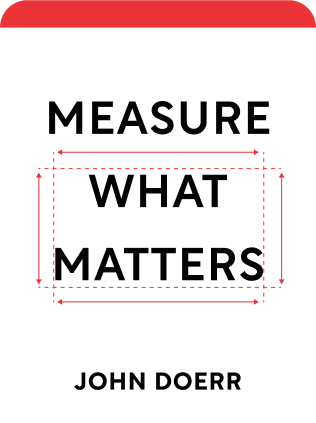

This article is an excerpt from the Shortform summary of "Measure What Matters" by John Doerr. Shortform has the world's best summaries of books you should be reading.
Like this article? Sign up for a free trial here .
What are OKR CFRs? How do they work and what can they tell you about your OKRs?
In OKR, CFRs are short for continuous performance management. OKR CFRs help you measure your ongoing progress using tools in the OKR system. OKR CFRs allow regular check-ins on your goals and more.
Read more to find out the answer the question “what are CFRs?” and how OKRs, CFRs, and more work together.
What Are OKR CFRs?
Measure What Matters also explores the system of continuous performance management, or CFRs, an alternative to annual performance reviews. This system allows managers to give feedback regularly, help employees improve throughout the year, and address issues as they arise.
In the system on OKR, CFRs are your tools for implementing a continuous performance management system. OKRs, CFRs, and more help make up the whole OKR system.
- C: Conversations between employees and managers
- F: Feedback both from and to managers and among peers
- R: Recognition from peers and managers for small and large contributions toward goals
C: Conversations
The next step of OKR CFRs are conversations. They happen weekly or monthly, in both formal and informal environments.
As a manager, your conversations with employees cover 5 main topic areas (but you don’t need to cover all of them in one conversation):
- Reflecting on past goals and setting new ones.
- Updates on OKR progress, problem-solving if necessary.
- Coaching: Guide the employee in his or her thinking about the OKR approach, and encourage the employee to offer feedback to help you, the manager, do your job better.
- Professional development: Work with the employee to develop the necessary skills, knowledge, and mindset to succeed at the company.
- “Lightweight” performance reviews: Discuss what the employee has accomplished since your last meeting, and view this progress within the context of the company’s priorities and needs.
F: Feedback
In order to improve, employees need to know how they’re doing—often, they don’t have enough distance from their work and performance to make this call themselves. This is the next step of OKR CFRs.
You can elicit and guide feedback in one-on-one meetings with these questions:
- Employee: Do you have any feedback on how I could improve my performance, make more progress toward my goals, or set more ambitious OKRs?
- Manager: What do you need from me to succeed?
R: Recognition
Last on your CFRs list is Recognition. Recognition should be both private and public and focused on actions. There are many ways to establish a “high-recognition” culture:
- Introduce a peer-to-peer recognition system. For example, you could end Friday meetings with the opportunity for employees to give a shout out to the work of their peers.
- Focus on actions and results. Instead of honoring an Employee of the Month, honor an Achievement of the Month. Celebrate people for what they do, particularly when they complete OKRs that contribute to company goals or they demonstrate company values.
- Link recognition to the company’s goals. When you have a particular, company-wide OKR you’re trying to push, focus recognition on the people who are helping the company make progress toward it.
Building a Positive Culture
In one study, researchers found that “high-motivation cultures” depend on two elements: catalysts and nourishers. What what are CFRs related to OKRs?
Catalysts are elements of a company that support the work being done. These elements include goal setting, learning from failure, transparency, engaging in meaningful work, and freely sharing ideas. All of these elements are built into the OKR system.
Nourishers are elements of a company that support the interpersonal needs of employees. These elements include positive feedback, professional development, emotional support, psychological safety, and recognition. All of these elements are built into the OKR CFR system.
In other words, OKRs are the catalysts of a positive workplace culture; CFRs are the nourishment that sustains it. OKRs, CFRs and your work culture are all an important part of the OKR system.

———End of Preview———
Like what you just read? Read the rest of the world's best summary of John Doerr's "Measure What Matters" at Shortform .
Here's what you'll find in our full Measure What Matters summary :
- How Google uses OKRs to rally 100,000 employees in the right direction
- How to avoid setting useless OKRs, and how to set great ones
- Key subtle behaviors your team must master to make OKRs work






